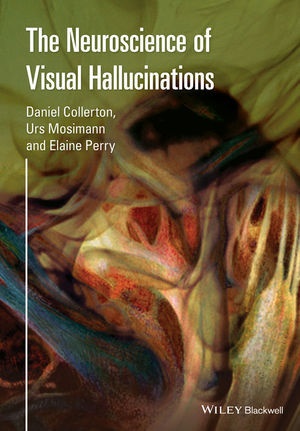Read more
Informationen zum Autor Daniel Collerton, Consultant Clinical Psychologist, Northumberland, Tyne and Wear NHS Foundation Trust, UK Elaine Perry, Institute of Ageing and Health , Newcastle University, UK Urs Peter Mosimann, University Hospital of Old Age Psychiatry, University of Bern, Switzerland Klappentext Each year, some two million people in the United Kingdom experience visual hallucinations. Infrequent, fleeting visual hallucinations, often around sleep, are a usual feature of life. In contrast, consistent, frequent, persistent hallucinations during waking are strongly associated with clinical disorders; in particular delirium, eye disease, psychosis, and dementia. Research interest in these disorders has driven a rapid expansion in investigatory techniques, new evidence, and explanatory models. In parallel, a move to generative models of normal visual function has resolved the theoretical tension between veridical and hallucinatory perceptions. From initial fragmented areas of investigation, the field has become increasingly coherent over the last decade. Controversiesand gaps remain, but for the first time the shapes of possible unifying models are becoming clear, along with the techniques for testing these.This book provides a comprehensive survey of the neuroscience of visual hallucinations and the clinical techniques for testing these. It brings together the very latest evidence from cognitive neuropsychology, neuroimaging, neuropathology, and neuropharmacology, placing this within current models of visual perception.Leading researchers from a range of clinical and basic science areas describe visual hallucinations in their historical and scientific context, combining introductory information with up-to-date discoveries. They discuss results from the main investigatory techniques applied in a range of clinical disorders. The final section outlines future research directions investigating the potential for new understandings of veridical and hallucinatory perceptions, and for treatments of problematic hallucinations.Fully comprehensive, this is an essential reference for clinicians in the fields of the psychology and psychiatry of hallucinations, as well as for researchers in departments, research institutes and libraries. It has strong foundations in neuroscience, cognitive science, optometry, psychiatry, psychology, clinical medicine, and philosophy. With its lucid explanation and many illustrations, it is a clear resource for educators and advanced undergraduate and graduate students. Zusammenfassung Each year, some two million people in the United Kingdom experience visual hallucinations. Infrequent, fleeting visual hallucinations, often around sleep, are a usual feature of life. Inhaltsverzeichnis List of contributors ix Foreword xi Section 1: Background and Context 1 1 Visual hallucinations: history and context of current research 3 G.E. Berrios and Ivana S. Marková 1.1 Introduction 3 1.2 The construction of visual hallucinations 5 1.3 Epistemology: dichotomies 11 1.4 Research and its vicissitudes 15 1.5 Bringing the history of visual hallucinations and research together 17 1.6 Conclusions 18 1.7 References 19 2 Defining and measuring hallucinations and their consequences - what is really the difference between a veridical perception and a hallucination? Categories of hallucinatory experiences 23 Jan Dirk Blom 2.1 What every student knows 23 2.2 Suspended between realism and anti-realism 24 2.3 Faith 26 2.4 The philosophy of As If 28 2.5 Visual hallucinations 28 2.6 Visual illusions 30 2.7 Metamorphopsias (visual distortions) 34 2.8 Ways of measuring and quantifying positive disorders of vision 37 2.9 Concluding remarks 38 2.10 Ref...

